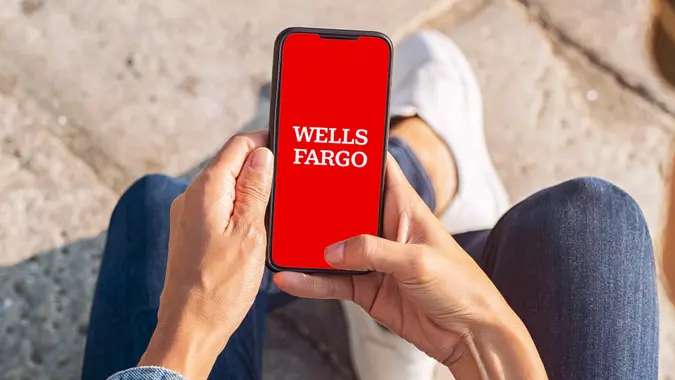Rainy Day Fund vs. Emergency Fund: What’s the Difference and Do You Need Both?

Commitment to Our Readers
GOBankingRates' editorial team is committed to bringing you unbiased reviews and information. We use data-driven methodologies to evaluate financial products and services - our reviews and ratings are not influenced by advertisers. You can read more about our editorial guidelines and our products and services review methodology.

20 Years
Helping You Live Richer

Reviewed
by Experts

Trusted by
Millions of Readers
Having a contingency plan for emergencies — in the form of a dedicated savings account — is something experts say is crucial to financial wellness and might avoid your getting in debt or dipping into retirement savings or another dedicated bank account, were something unexpected to happen.
While emergency funds and rainy day funds are both cornerstones to achieving peace of mind, and while the terms are sometimes interchangeable, these serve different purposes, according to experts.
“Many people use the terms interchangeably, but rainy day funds are typically meant for short-term, unexpected and non-critical financial needs,” said Chip Griffith, SVP of retail sales and operations at OneAZ Credit Union. “Emergency funds are a much more comprehensive financial safety net.”
To put this in context, a recent LendingTree survey found that 27% of Americans say they’re in debt due to an emergency expense they couldn’t cover. And among those who faced a financial emergency in the past six months, more than half — 55% — took on debt because of it, with 27% of them taking on more than $5,000 in debt, the survey found. What’s more, the Federal Reserve’s Economic Well-Being of U.S. Households report found that a whopping 37% of Americans would not be able to cover $400 for an emergency.
Rainy Day Fund vs. Emergency Fund: What Are the Differences?
An emergency fund is generally the equivalent of at least three to six months of living expenses. And with life’s unpredictability, having one that is well beefed-up can help you not go into debt or dip into retirement savings, for example.
“Think of emergency funds like safety nets for unexpected expenses — times when life throws you a curveball,” said Joe Camberato, CEO of National Business Capital.
Finance expert Kyle Enright, president of Achieve Lending, argued that both types of funds are to help you cover the inevitable unexpected expense. A rainy day fund is usually thought of as readily available cash savings to cover relatively minor unexpected expenses that come up in day-to-day living — without having to rush for the credit card.
“These expenses might include things like a repair to a needed appliance, vehicle repair or a trip to the doctor or urgent care that’s not covered by insurance,” said Enright. Meanwhile, an emergency fund is intended to cover more major and longer-term expenses, such as those encountered in a significant life event, like loss of a job, major medical expenses or large necessary repairs to your home, he added.
Should You Have Both?
Some experts argued that whether or not you need both a rainy day fund and an emergency fund really depends on how you like to look at your savings.
For instance, if having both on hand gives you peace of mind — go for it, said Erika Kullberg, attorney, personal finance and debt expert and founder of Erika.com.
Yet, other experts also said that by having both funds, individuals can create a comprehensive, more holistic approach for financial preparedness.
“Having both allows you to manage minor disruptions easily while preserving your emergency fund for more severe financial crises,” said Taylor Kovar, CFP, CEO and founder of Kovar Wealth Management.
Saving for Both
Enright noted that it’s very difficult for many people to save for any unplanned expense. For example, a recent Achieve survey found that 51% of Americans have less than $1,000 in an emergency savings fund, including 28% who said they have no emergency savings at all.
“While creating two savings funds — one for rainy day expenses and one for longer-term emergencies — will work for some consumers, just establishing and building one fund would be a huge positive step forward for most people,” he said.
In other words, experts said that generally, you should establish a rainy day fund when you have excess savings above and beyond your emergency fund.
Vijay Marolia, co-founder of The Cash Square, echoed the sentiment, arguing that you should establish a second savings fund, once you have enough to fund three-to-six months of vital living expenses.
Another difference between both types of funds is the amount of money you should save. Griffith said that while emergency funds should hold multiple months worth of living expenses, a rainy day fund should have anywhere from $500 to $2,500. He also recommended holding emergency funds in a high-yield savings account, money market account or certificate of deposit.
 Written by
Written by  Edited by
Edited by 

























